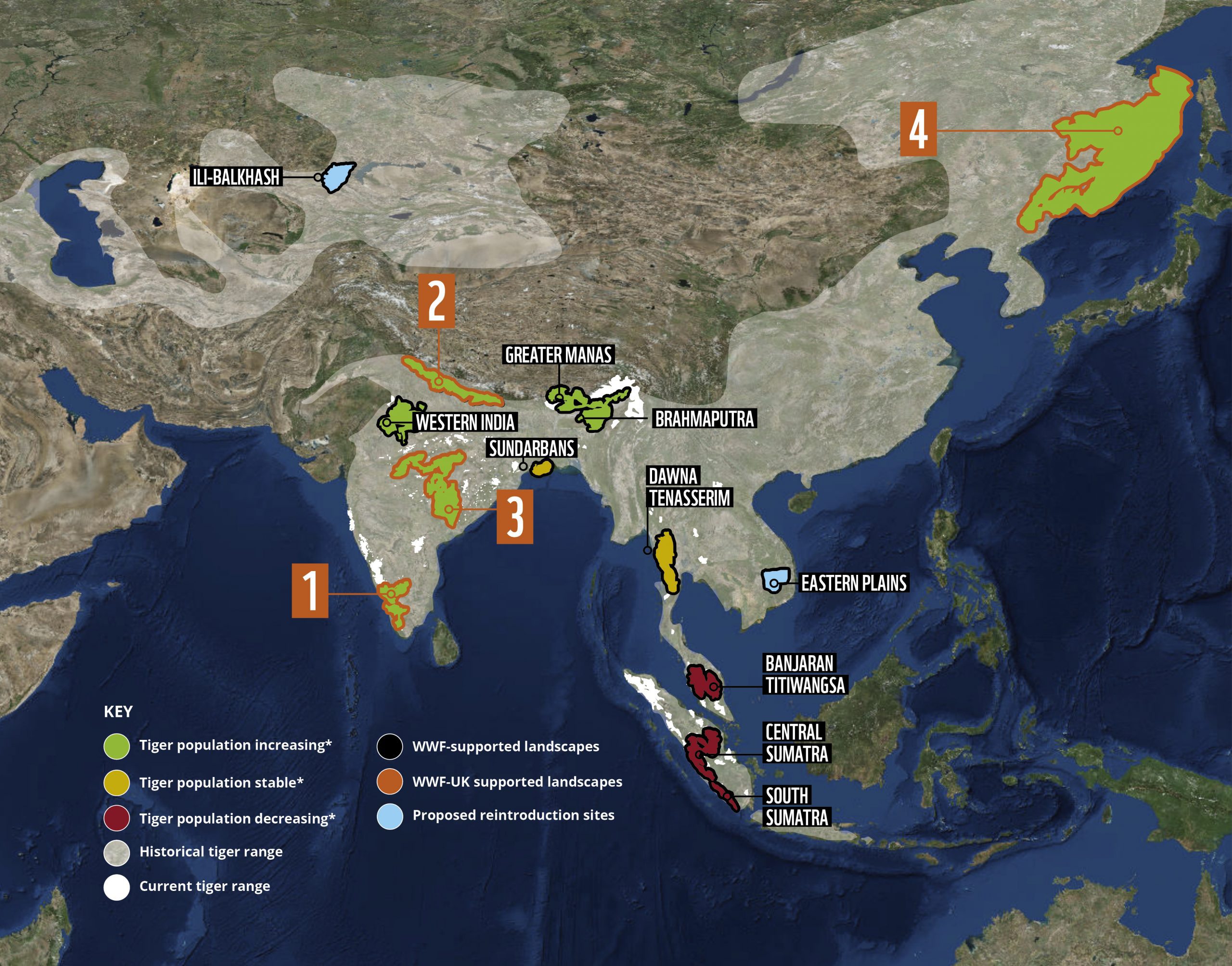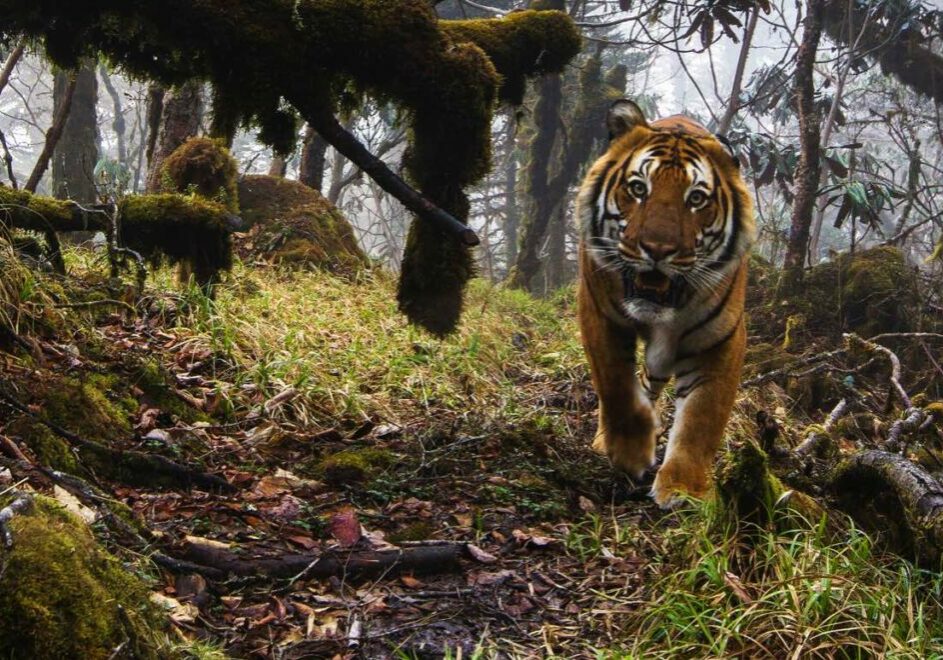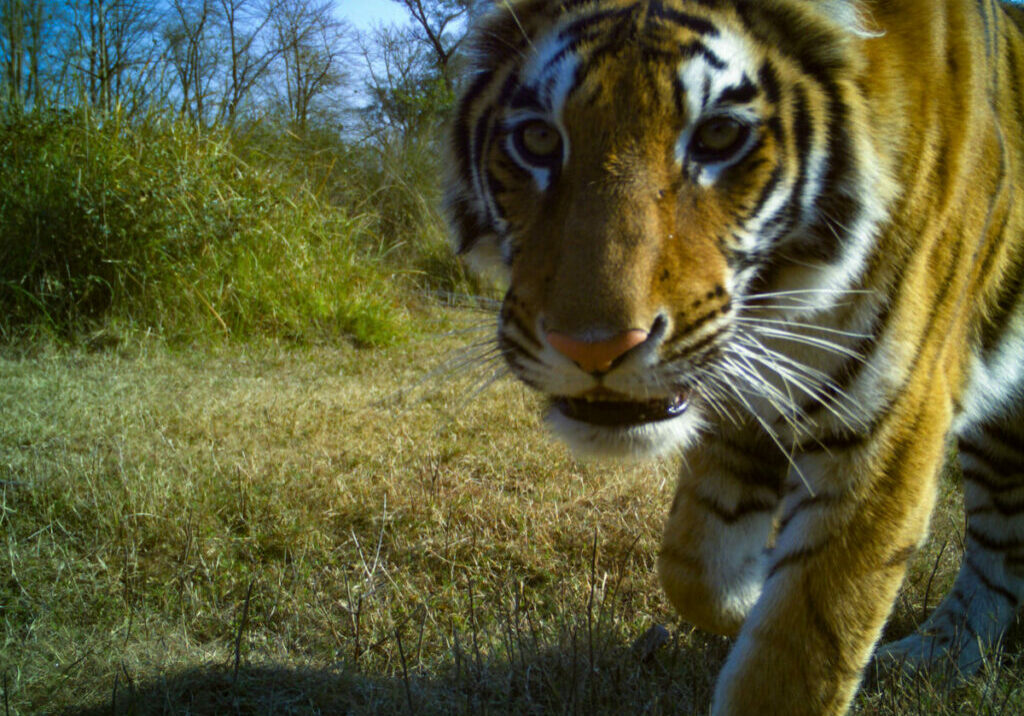The tiger pads along a trail, eyes caught in the camera flash as it stares into the night. The monochrome image, captured remotely on a camera trap last November, may be a little blurred, but what’s remarkable is the location. This tiger is in Ilam, eastern Nepal, and at an altitude of 3,165m.
Tigers in Nepal are nothing new, but all the known populations are in the southern lowlands. This individual is not only far to the east of its usual range but also far above it. Indeed, it is the highest-altitude tiger ever recorded in Nepal.
“Tigers are rewilding themselves,” says Stuart Chapman, who heads WWF’s Tigers Alive team. He explains that this cat is a versatile predator, equally at home at 40°C in the steamy tropics and -40°C in the snowy forests of the north. If left alone, all it requires is suitable habitat and sufficient prey.
But while finding tigers in unexpected locations might be thrilling, it raises challenges for those trying to protect them. “If tigers are on the move,” says Stuart, “conservation needs to keep up with them.”

© RPN
Tiger conservation has a sobering history. In 2010, surveys revealed the global population had fallen to an all-time low of as few as 3,200 individuals, down from around 100,000 at the start of the 20th century. Under siege from poaching and habitat destruction, the world’s largest cat had become one of its rarest. “If that decline had continued,” explains Stuart, “this species would have blinked out across its range in Asia.”
Urgent action was needed. That year, a tiger summit was convened involving all tiger-range governments, the World Bank, WWF and other partners, at which an ambitious goal was set: to double the number of tigers in the wild by 2022, the next lunar Year of the Tiger. This bold commitment was dubbed ‘Tiger Times Two’ – or TX2, for short.
“The goal has catalysed action,” says Becci May, our senior programme adviser for tigers. She explains how, with your help, TX2 has provided fresh impetus to WWF’s long-running tiger conservation efforts, strengthening our work to combat the threats tigers face and, alongside partners in 14 different tiger landscapes, pioneering ways to help people and tigers live together.
Halfway through the project, the results were impressive. Not only had the global decline in wild tigers been arrested, but the population had risen to around 3,900 by 2016.
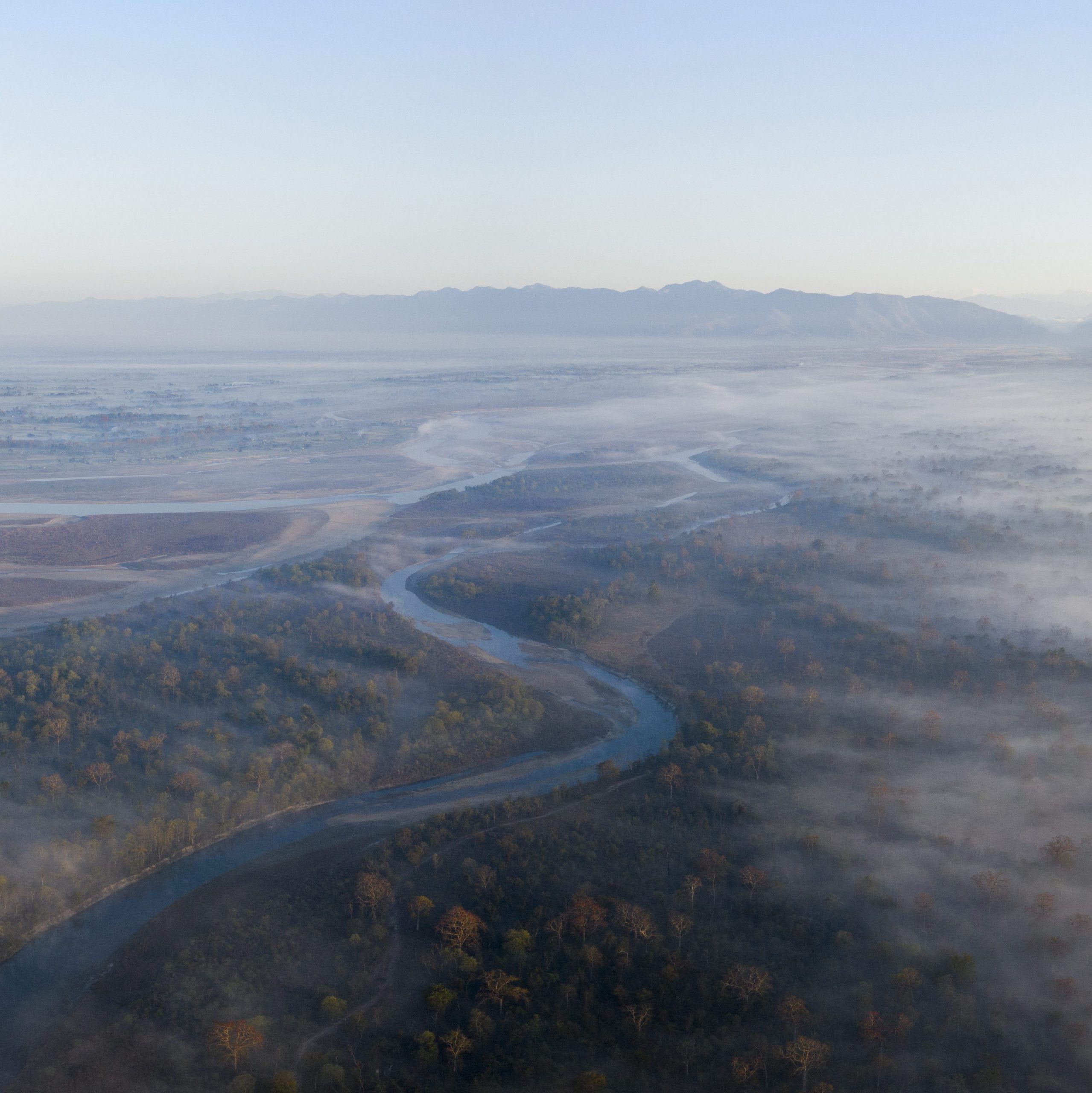
Spanning 6km at its broadest point and about 1km at its narrowest, the Khata corridor follows the Karnali river to connect Katarniaghat Wildlife Sanctuary in India with Bardia National Park and the foothills of the Himalayas
© EMMANUEL RONDEAU / WWF-US
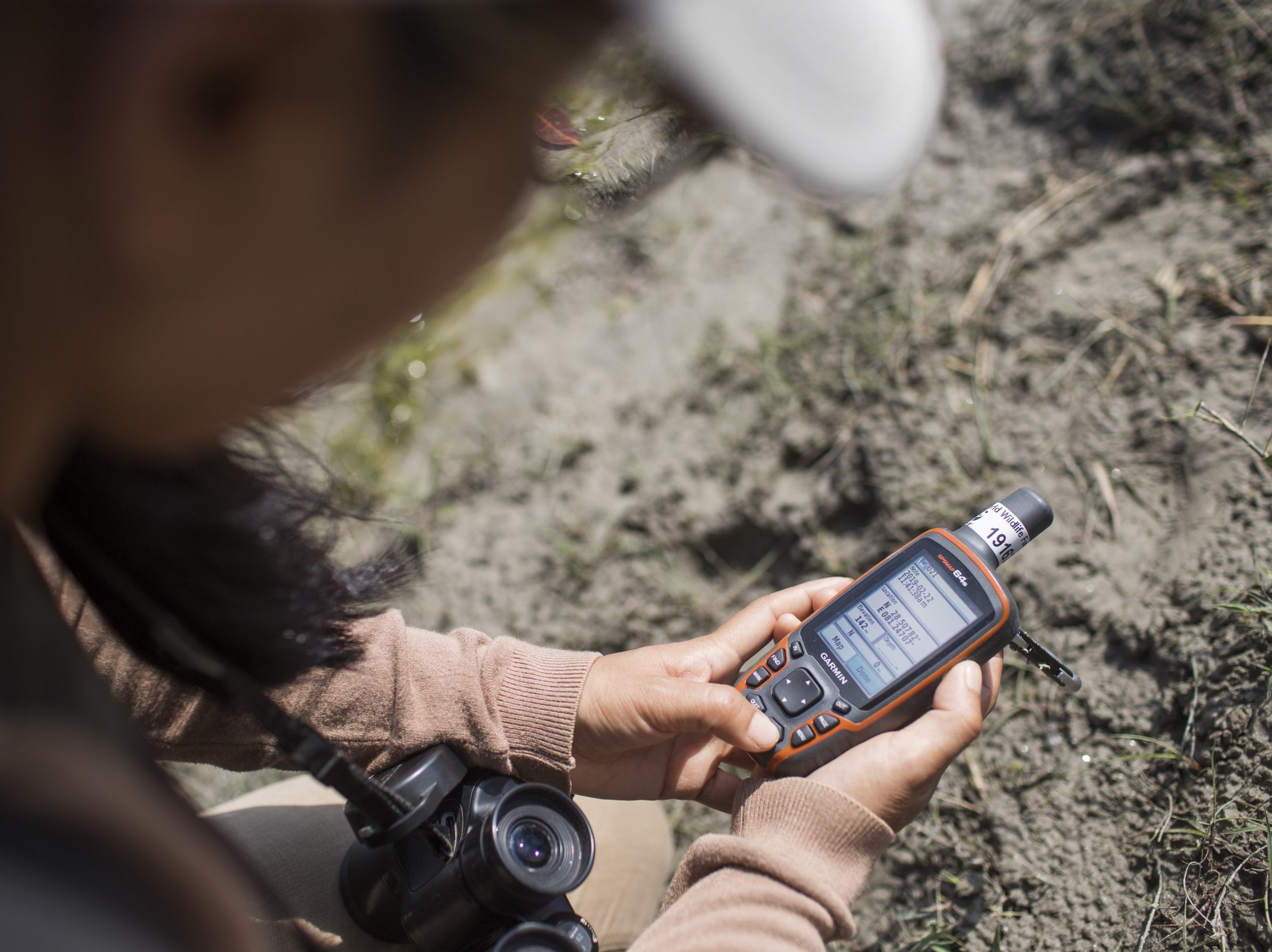

© EMMANUEL RONDEAU / WWF-US
Nepal’s trail-camera tiger highlights a critical element in tiger conservation: the need for more corridors of suitable habitat that link one safe space with another. Nobody is sure where this individual came from – it may have strolled across from India – but in a world of increasing human pressure, remaining tiger populations risk becoming trapped in ‘islands’ of protection.
To secure the species’ long-term future, these populations must be allowed to spread out and connect, promoting a healthy gene flow throughout the broader population.
Nepal provides a good example of success in this respect. This is the first tiger range country to have achieved the TX2 goal since 2010 in its own right, with the 2009 population of around 120 tigers having trebled to an estimated 355 today.
Corridors and connections
Bardia National Park, in particular, has seen an impressive recovery. Part of the richly biodiverse Terai Arc Landscape, which straddles south-western Nepal and northern India, this park lies just across the border from Katarniaghat Wildlife Sanctuary in India.
Between the two lies the Khata corridor. It was once a degraded and overgrazed area, but we’ve worked closely with the local community to restore this 13x6km buffer zone, providing natural resources for the community and rich habitat for tigers.
“Forest without grassland is bad for prey because they don’t have anything to graze on,” says WWF-Nepal senior manager Sabita Malla, explaining how a community-run programme of controlled burns and regular grass cutting to maintain shorter, nutritious grazing lawns has benefited prey species in Khata.
Tigers have been quick to take advantage of this revitalised habitat and are once again moving through the corridor. The population has surged. In Bardia, numbers have risen from just 18 in 2009 to at least 87 today: a nearly five-fold increase.
We’re working with Chinese partners, including the nation’s first all-female ranger team, to identify and protect tiger dispersal routes in the Dongning forest area between North-east China Amur Tiger and Leopard National Park and Russia’s Land of the Leopard Nation Park.
Camera traps are revealing increasing evidence of tigers on the Chinese side. To encourage this natural dispersal, we’re supporting projects to conserve and reintroduce key prey species, including red and sika deer. This will provide enough food to attract tigers to new territories and sustain them once they’re there.
explore tiger landscapes
Today, around 83% of wild tigers live in 12 of 14 WWF-supported landscapes. Since 2018 we’ve focused our attention within these landscapes on 71 priority sites identified as having the greatest potential for tiger recovery. These sites are called ‘heartlands’. Together they’re home to around a quarter of the world’s tiger population. WWF-UK supports heartlands across four of the 14 landscapes (numbered on the map).
WWF-Uk supported landscapes

1. TERAI ARC
51,000 sq km
This region spans 810km of lowlands and foothills in north-west India and southern Nepal, and is home to around 850 tigers. Protected areas include India’s Corbett Tiger Reserve and Nepal’s Bardia and Chitwan national parks.
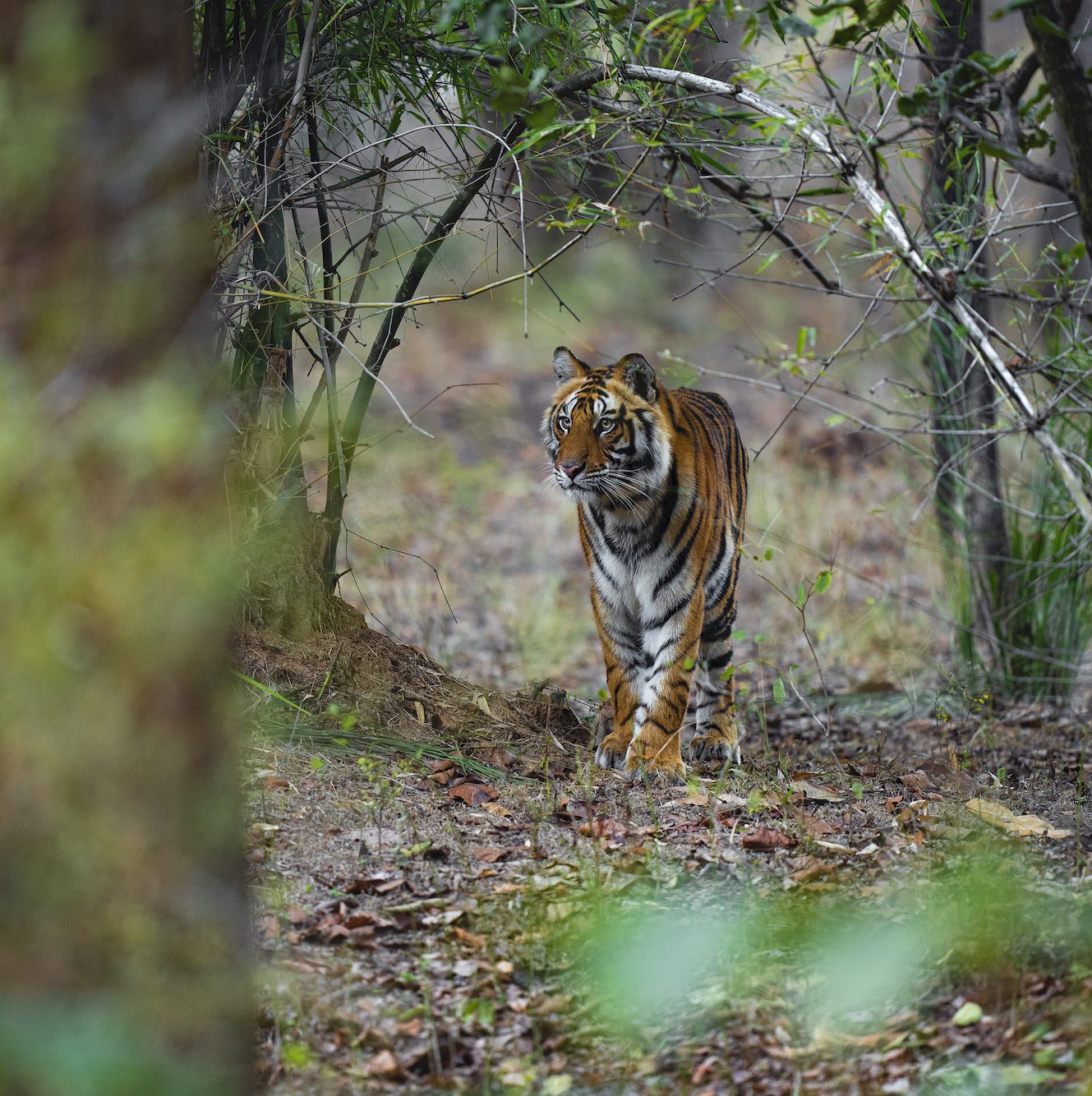
2. Western Ghats Nilgiris
approx 18,500 sq km
This hilly south-west Indian region is a Unesco-recognised global biodiversity hotspot. Its 11 tiger reserves are home to around 780 wild tigers.
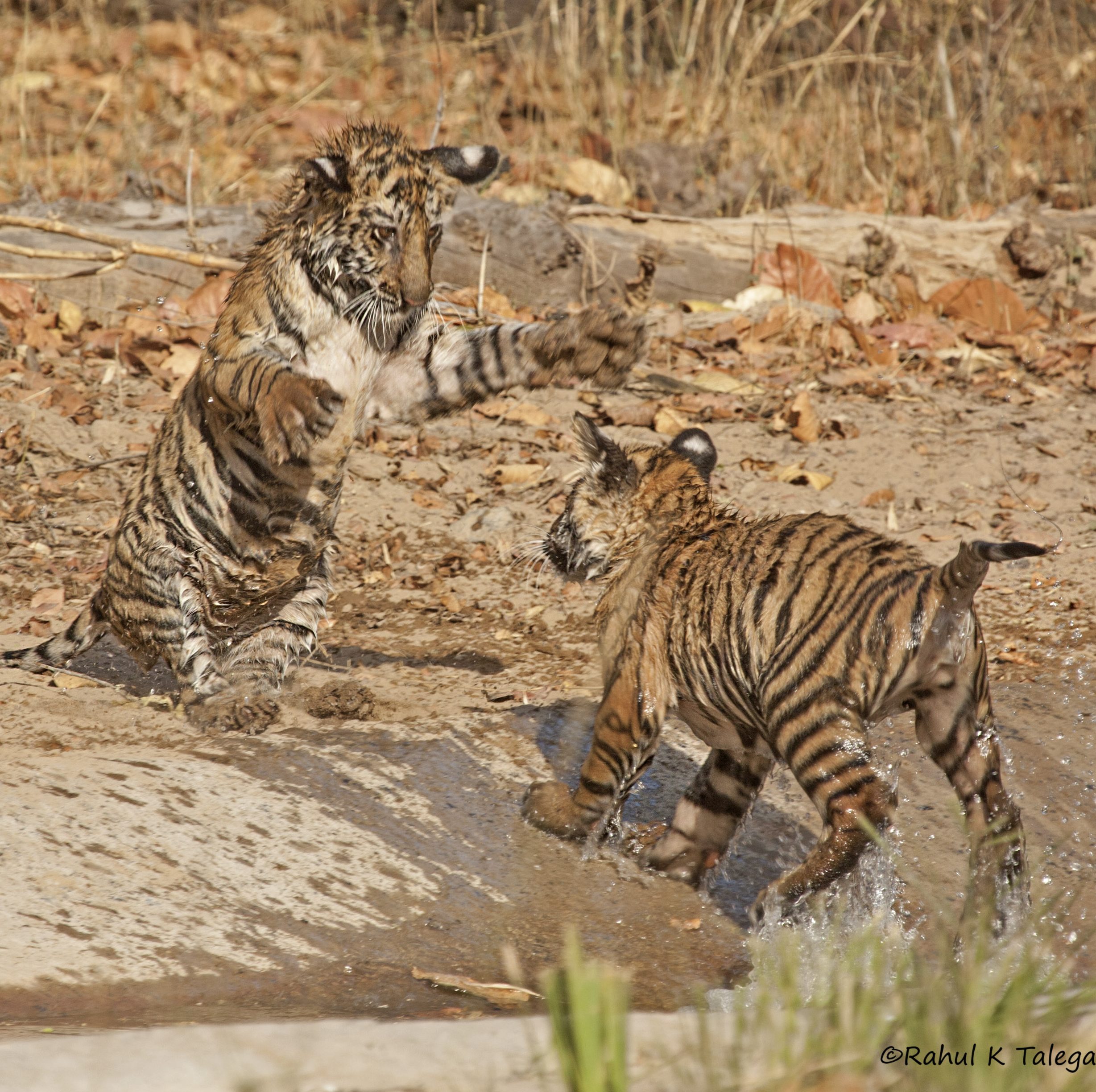
3. Central india
152,000 sq km
This forested region includes the Satpuda and Maikal hills at the heart of India. It is home to around 800 of India’s tigers, largely in such well-known reserves as Kanha, Pench and Tadoba.
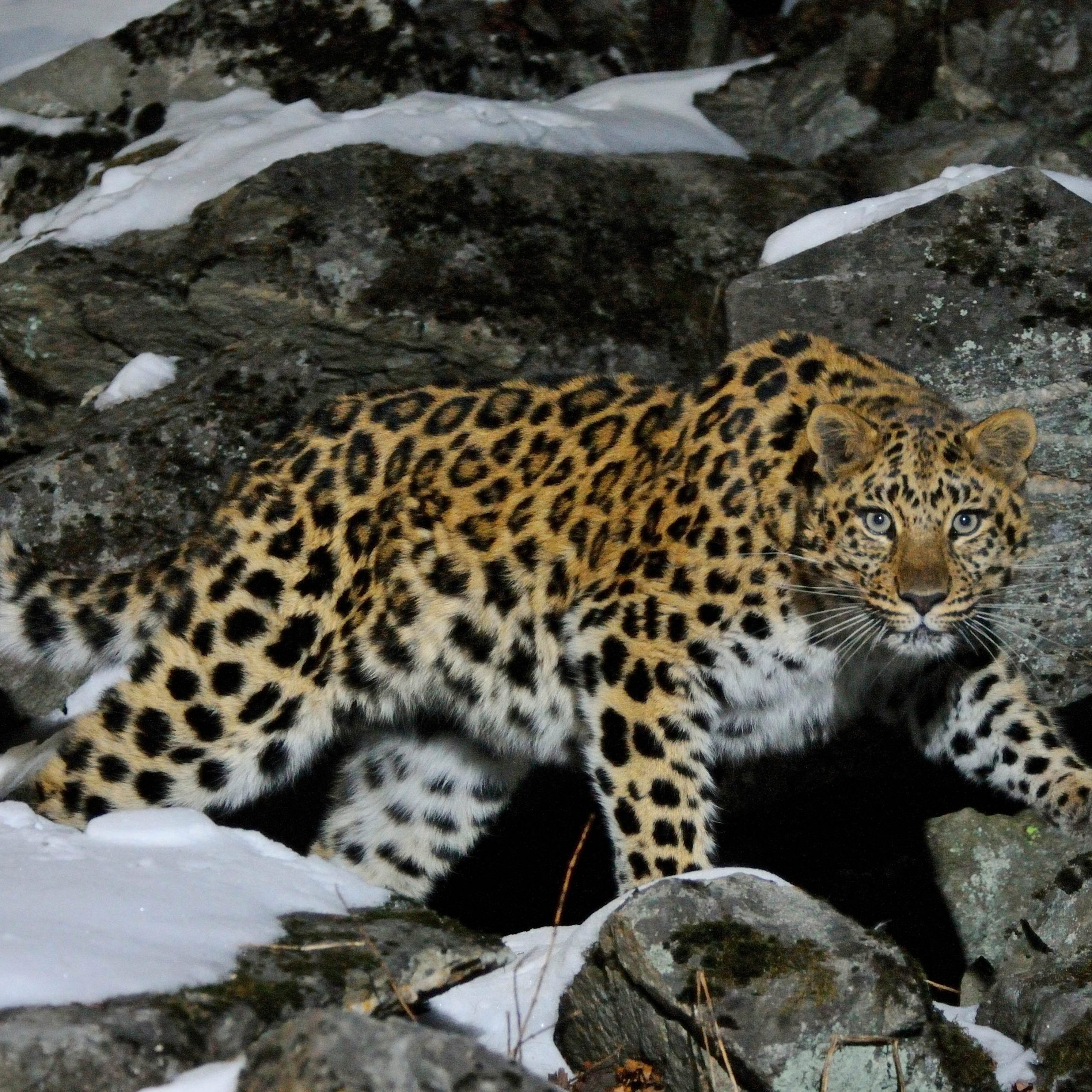
4. Amur-Heilong
1.84 million sq km
This vast, rugged, cross-border region straddles north-eastern China and the Russian far east. There are estimated to be around 580 tigers in Russia, and 20–30 in China. The region is also home to the critically endangered Amur leopard.
Living with tigers
When tigers find new territories, they soon encounter people. Today, more than half the world’s human population lives within the species’ global range, and in the ‘buffer zones’ around reserves millions of people make their living from the land. Inevitably, some encounters between people and the cats are negative. Tigers predate livestock, especially where they can’t find enough natural prey. Occasionally, they even attack humans.
The concerns of local communities are at the heart of all WWF tiger conservation programmes, explains Becci. “We need to ask how the risk of conflict is best reduced and managed,” she says. “We work alongside local communities to understand their concerns and help find ways to protect and improve their livelihoods.”
In turn, it’s the communities who provide the best solutions. Nepal’s Terai Arc region, home to more than 7.5 million people, again provides an excellent example. Twenty years ago, conflict with wildlife in the buffer zones around Bardia was a constant problem.
We then saw that while the human population increased, the number of incidences fell. With our support, the community continues to do what they can to prevent problems, such as using predator-proof pens for their livestock, and are better placed to respond constructively to problems as they arise.
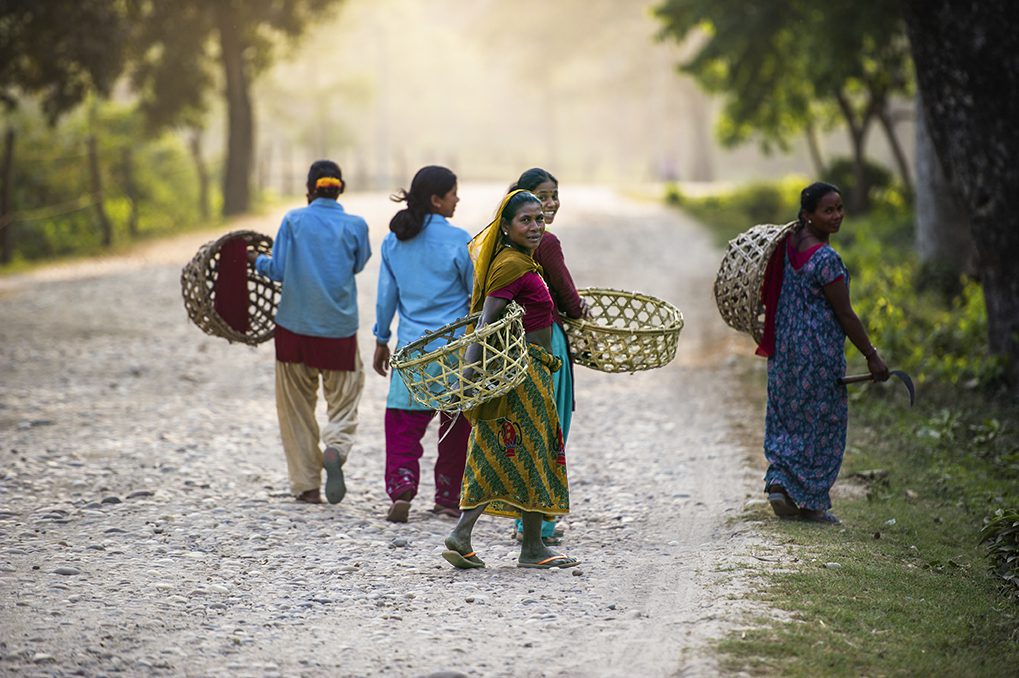
© GARY VAN WYK / THE GINKGO AGENCY / WHISKAS / WWF-UK
Better mapping, by using drones and camera traps, has also helped us identify problem areas and focus resources accordingly. Community-led rapid response teams now act quickly to deal with conflict incidents, helping affected villagers repair any damage and file claims for compensation. Interim relief schemes tide over affected families with immediate funds while they await payouts, and help quell feelings of anger that might lead to deadly reprisals.
Meanwhile, the community receives 50% of park revenue and benefits from ecotourism enterprises such as homestays. Villagers help in the conservation groundwork, organising forest patrols to guard against poaching, monitoring wildlife and restoring the habitat through replanting – which, in turn, provides them with more natural resources, from firewood to wild mushrooms. It’s a people-centred conservation approach that benefits both wildlife and the community.
Given the right conditions, tigers can return to areas they once called home under their own steam. “It’s about removing the threats,” confirms Becci, “so that the cats can come back by themselves.” But in some places, especially where human development has created insurmountable barriers, they can benefit from a helping hand.
In India, home to over half of the world’s wild tigers, scientists have identified 15,000 sq km of prime tiger real estate that has the potential to support a further 3,900 individuals. We hope habitat corridors will allow tigers to repopulate many of these places organically. In the short term, however, reintroductions are giving them a head start.
Tigers in trouble
Cambodia, Lao PDR, Myanmar, Thailand and Vietnam contain the largest combined area of tiger habitat in the world. But here tigers are under intense pressure. Poaching, typically conducted by specialised syndicates, is the main culprit, with the demand for tiger body parts on eastern markets – for use as traditional medicines, tonics or status symbols – continuing to fuel the illegal wildlife trade.
Snaring takes a heavy toll: poachers can lay thousands of these simple but deadly wire traps undetected in forests. Meanwhile, policing is undermined by low prosecution rates for poachers, and by the lack of support for rangers: some 60% of rangers in tiger range countries still have no insurance cover for serious injury or death.

© WWF-MALAYSIA / LAU CHING FONG
In January 2021, our colleagues from WWF-India assisted in translocating a male and female tiger from Corbett Tiger Reserve to the western sector of Rajaji Reserve, where tigers haven’t bred since 2006. Studies suggest western Rajaji could support 30 tigers but at present there’s no viable corridor to the east, where the cats are already present.
The two radio-collared newcomers are the first of a group of five. The team is monitoring their progress, while working with the community to ensure the project remains sustainable.
Changing places
Reintroduction is expensive and will always be an extreme option. “The aim is to avoid reaching a point where we have no other options,” explains Becci. So our priorities remain restoring landscapes, resolving conflict and controlling poaching.
Russia’s Evreiskaya province proves such projects can succeed: reintroduction here has established a thriving population of around 20 tigers. And Evreiskaya, in turn, provides hope for an ambitious plan to return tigers to Kazakhstan.
The Caspian tiger became extinct 70 years ago in central Asia. However, the Amur tiger offers a close genetic link, and studies suggest that with good habitat and plentiful prey, Kazakhstan’s Ili-Balkhash region could support 120 tigers. Our WWF colleagues in Russia are now working with local partners to reintroduce bukhara deer, a key prey species, in the first phase of this 15-year project.
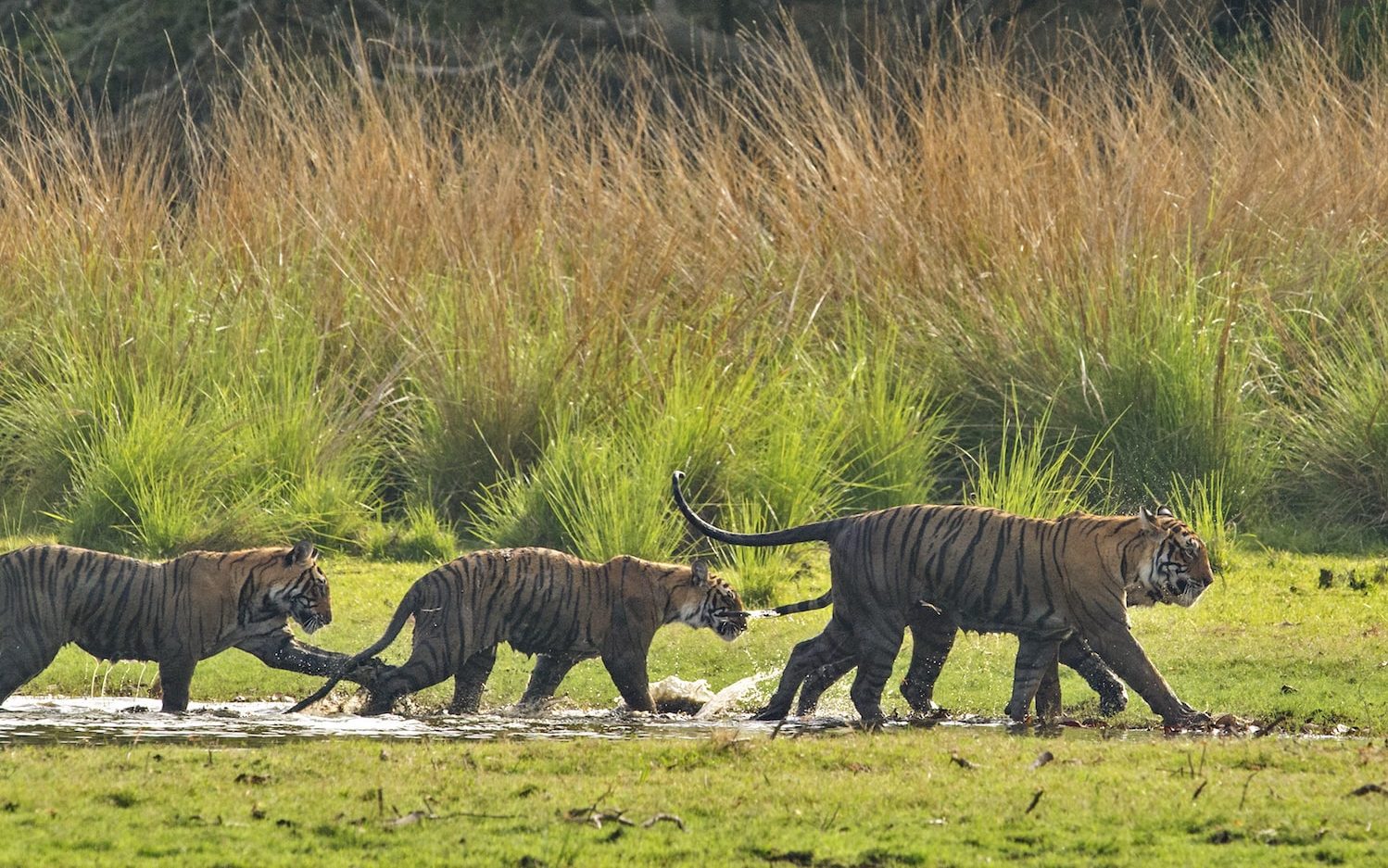
© GETTY
The TX2 campaign can report some outstanding successes, with the freefall of tiger numbers arrested globally, and indications that populations are stable or increasing in nine out of 12 WWF priority tiger landscapes (excluding reintroduction sites). But celebrations would be premature, as the principal threats haven’t gone away.
In south-east Asia, tigers are struggling. Over the past two decades, they have become extinct in Cambodia, Vietnam and, most recently, Lao PDR, while in Indonesia and Malaysia tiger population trends are uncertain. Poaching for illegal wildlife markets is an ever-present threat. So we’re supporting rangers across all our tiger landscapes with improved training and equipment, including the new SMART (Spatial Monitoring and Reporting Tool) tracking technology.
We’re also helping range states share their experiences through the Asia Poacher Prevention Working Group, while promoting demand-reduction education to reduce the illegal market. As ever, working with local communities is key.
In Malaysia’s Royal Belum State Park, where poaching has halved tiger numbers in recent years, WWF-Malaysia has recently recruited a patrol team from the local community. Project Stampede has now recorded an amazing 89% drop in active snares found by patrol teams.
The Covid-19 pandemic has also raised new concerns. Social and economic challenges across southern Asia have forced large numbers of people to return from cities to their rural homes. In Nepal’s Terai Arc, with homestay tourism on hold, local communities are struggling.
Chitwan National Park has seen a surge in illegal entries since lockdown, with more cases of illicit logging recorded during the first month (24 March–24 April 2020) than in the preceding 11 months combined. We’re working to support those communities most adversely affected.
Watch: Tiger release in Rajaji Tiger Reserve
TX2 is perhaps the most ambitious single-species international conservation programme ever undertaken. Some might wonder if the money and resources required can be justified. Stuart points to the tiger’s great historical and cultural significance worldwide. “If you can save the biggest of all cats,” he says, “then surely that’s the gold standard for conservation.”
Beyond the tiger’s iconic status, there’s its ecological importance. “Tigers are a keystone species,” adds Becci. “Their presence in a landscape indicates a healthy ecosystem: they determine the numbers of everything else.”
But while large carnivores may be vital for a healthy planet, they have always been among the most challenging animals to protect – partly because of the traditional antagonism from rural communities. “If we can get living with tigers right,” explains Stuart, “then we will have the formula for successful conservation of all carnivores.”
Tigers on track
The TX2 target has been reached in some territories, but not all of them. But this is still cause for celebration. “We’ve been on a remarkable journey since 2010,” says Becci, “and shown it’s possible to achieve success.” Stuart agrees: “We’ve demonstrated that with the right ingredients, we can have a world with wild tigers.”
Either way, TX2 is not the end of the story. The threats tigers face today will not disappear overnight. But successes so far prove that, with your support, wild tigers can continue to recover in number and return to lands they once roamed.
Tiger conservation, more than anything, is about proving that we can have a world where people and wildlife can live together. TX2 is simply a way-marker on a long journey towards that goal. And tigers are capable of long journeys, as that wandering individual in Nepal proved. They just need our help along the way.
Help us protect tigers
With your support, we can build on the work of TX2 and continue to protect tigers. Adopt a tiger and you’ll be helping to secure the big cats’ future
More to explore
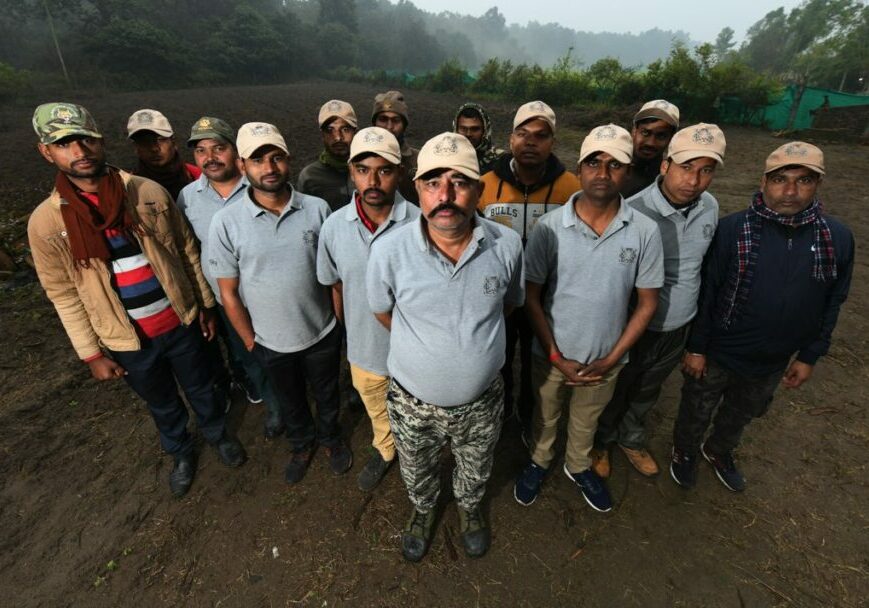
Photo story: A day with India’s ‘Tiger Friends’
Living alongside wildlife – particularly big cats – can be challenging. But a dedicated group of volunteers in India are helping people and tigers to share the landscape
